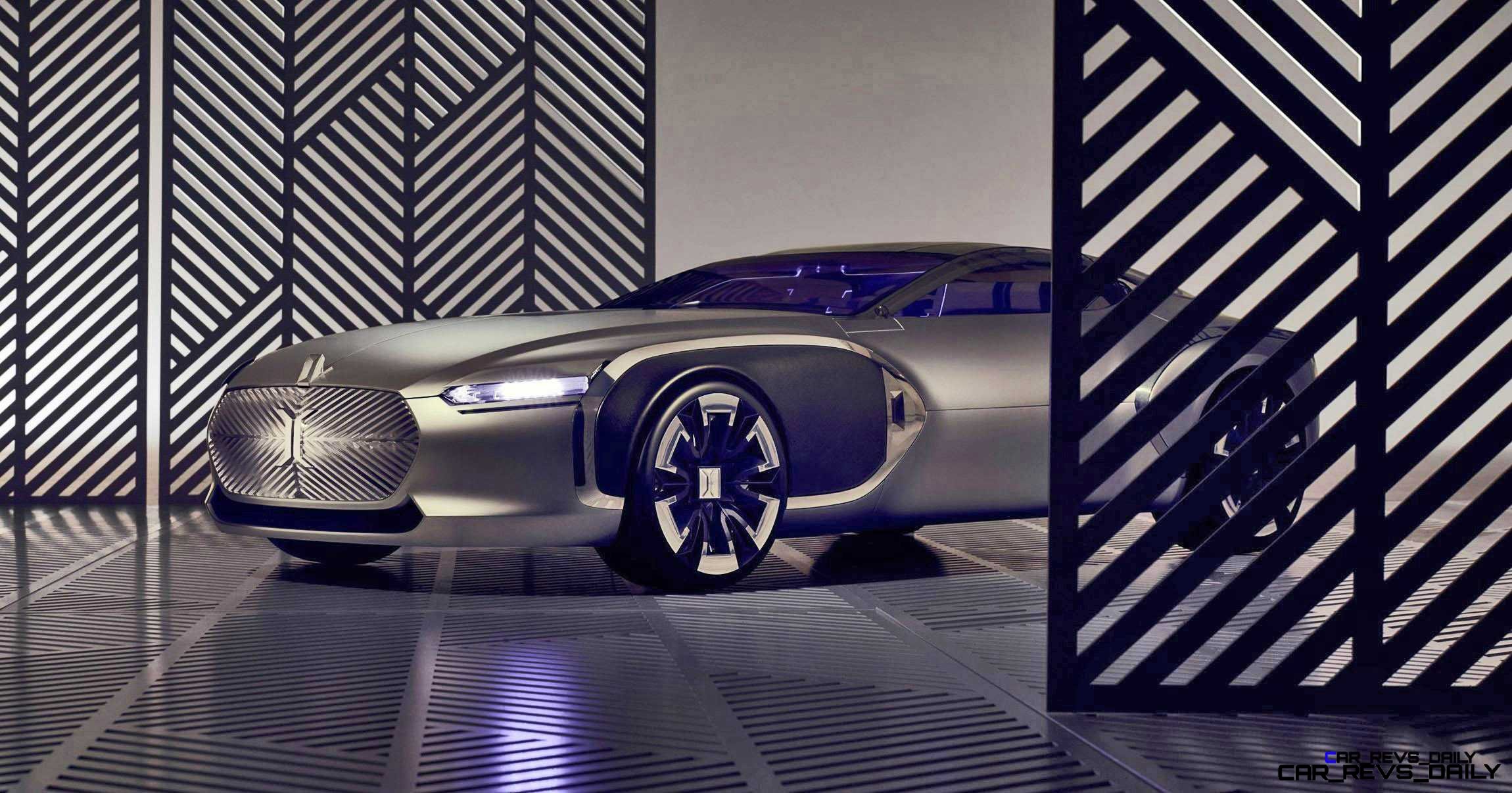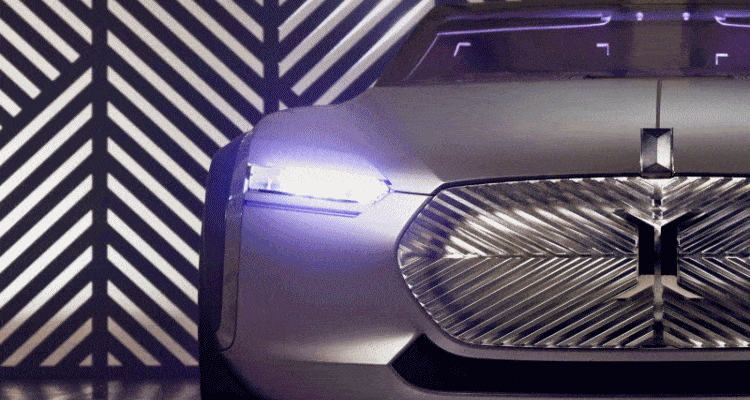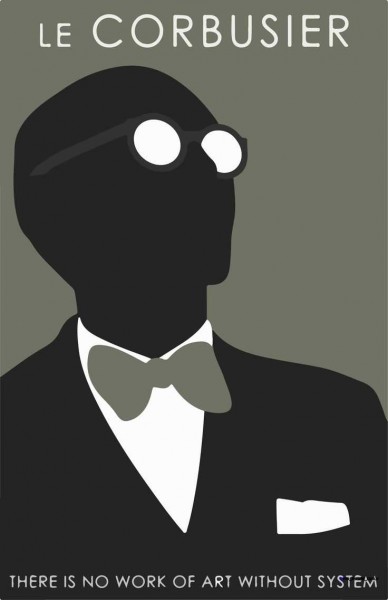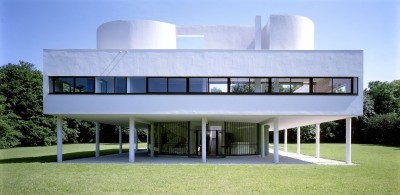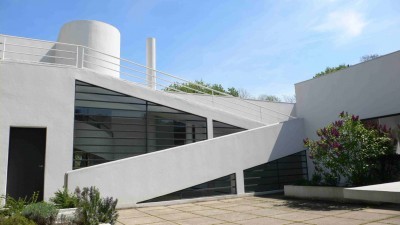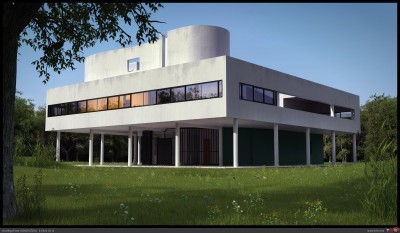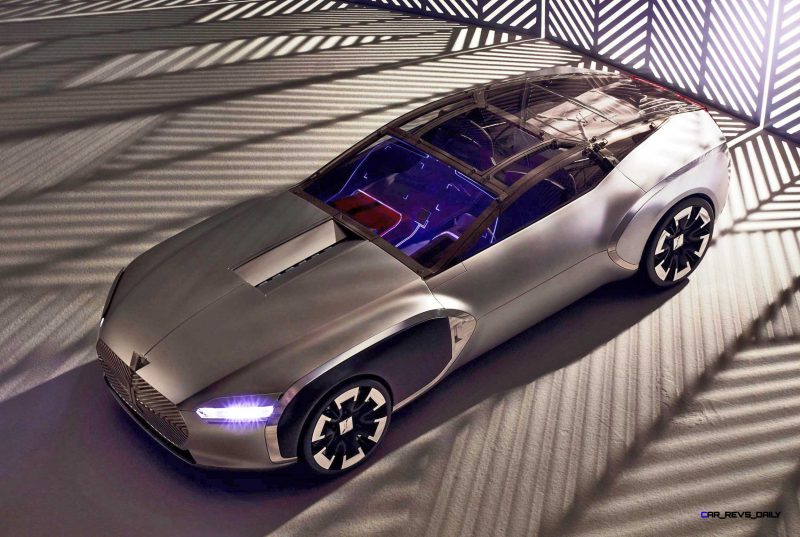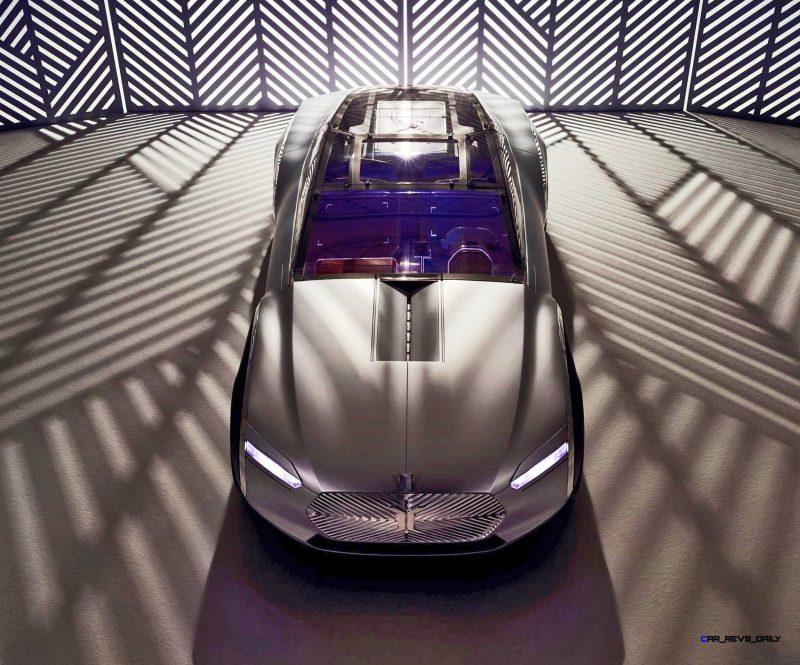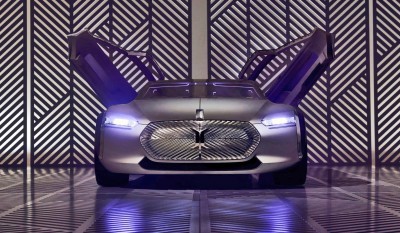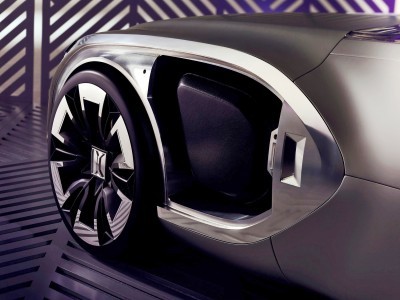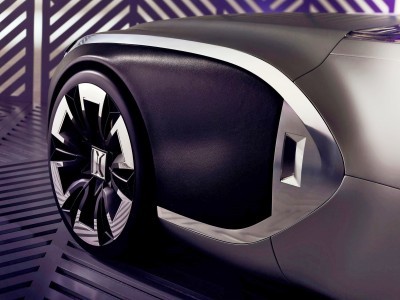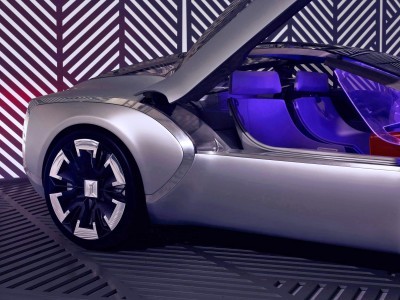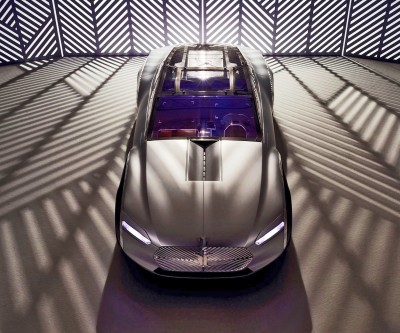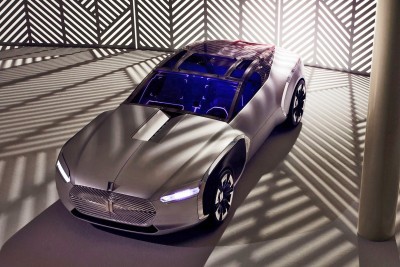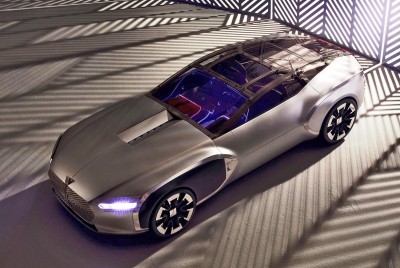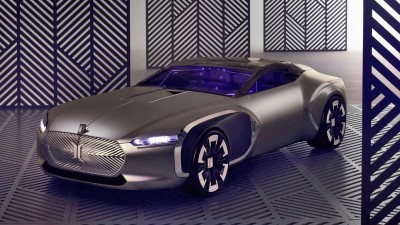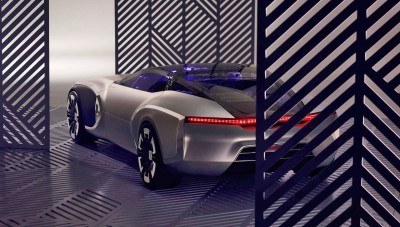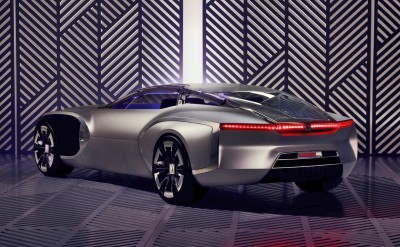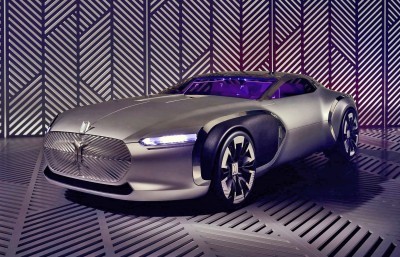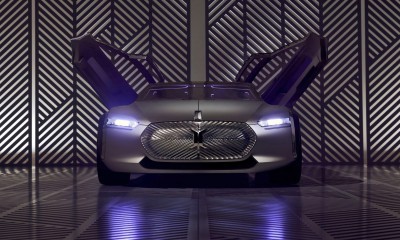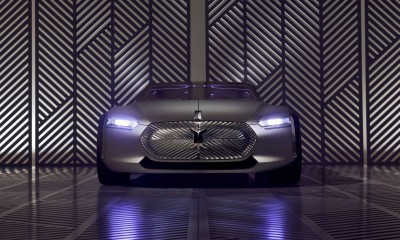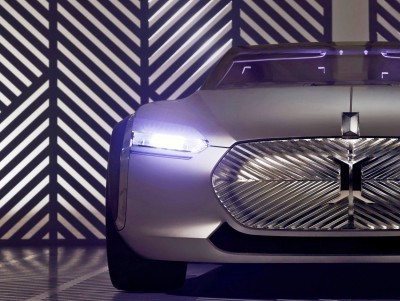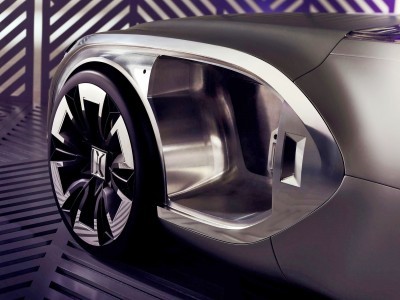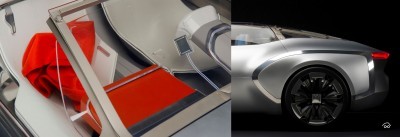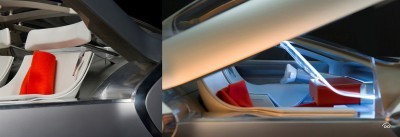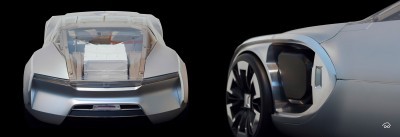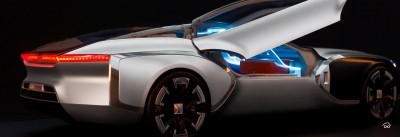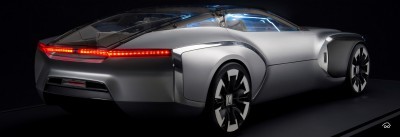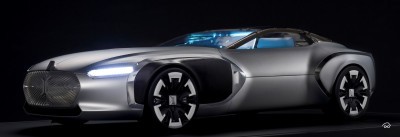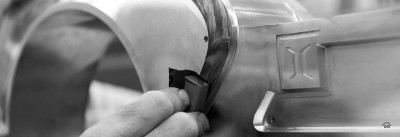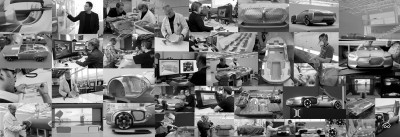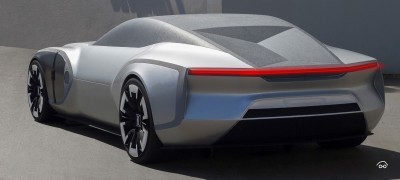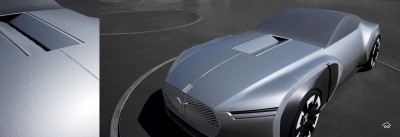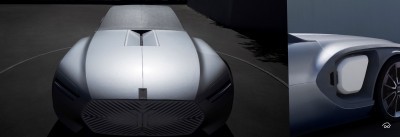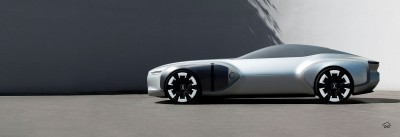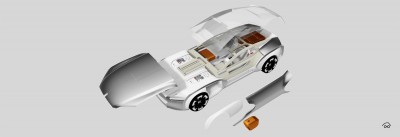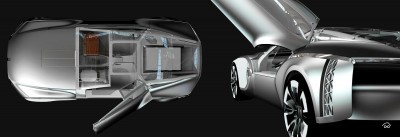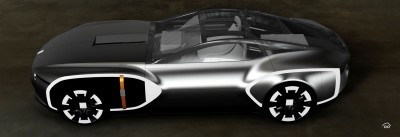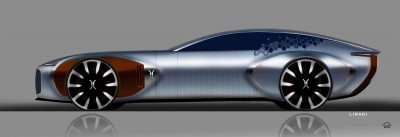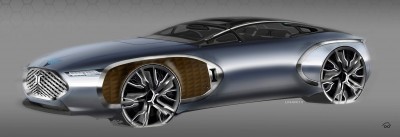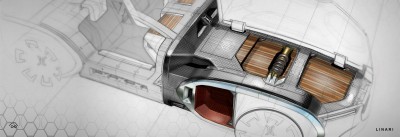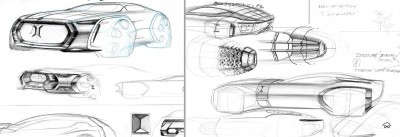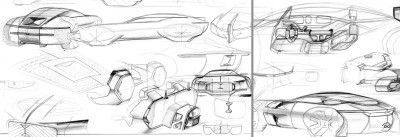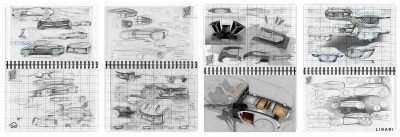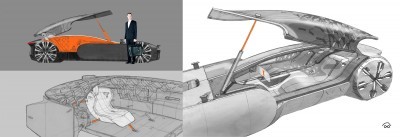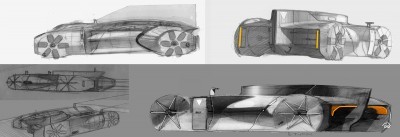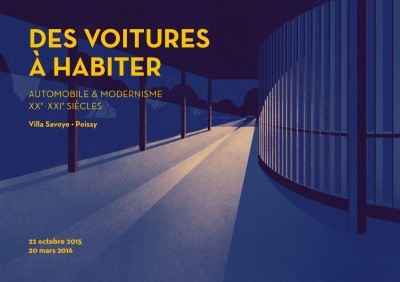 Shades of brutalism, yet light on the inside and accented with with fantasy curves. The description of the iconic Villa Savoye country house in France neatly applies to almost all Le Corbusier’s creations.
Shades of brutalism, yet light on the inside and accented with with fantasy curves. The description of the iconic Villa Savoye country house in France neatly applies to almost all Le Corbusier’s creations.
The architect is a legend in modernism, a movement that prioritized livable interiors, created with advanced industrial construction methods leaning heavily on steel and concrete.
The idea of Villa Savoye being a legendary cabin in France just epitomizes the era of its design. Cold-war emotions were running hot, while WWII and its mass destruction of France inspired a clean break in the national mood.
Villa Savoye, Ile de France
Renault took a deep dive over the past two years at Corbusier designs, with the vision of bringing his aesthetic to an ultra-futuristic car design.
The concept is finished and named the Coupe Corbusier, accordingly, which has instant cache among fine art lovers of all kinds. Even if you did not love the man’s vision of architecture, its influence is inescapable — worldwide.
In fact, this author’s Middle School was a clear knockoff of the style! It was hideous, and my glitzy hometown is in the process of bulldozing the eye-sore of a building. This middle school, with its giant gynasium on the fourth floor of the building, does have some unique merits. The concrete pilings did give an amazingly open layout for the main cafeteria and much of the hallways versus a normal low-rise brick school, but its architects succumped to 70s hideousness for every detail: orange carpets, stamped steel chairs. Leaky and drafty, too. That big gym on the top floor must have seemed novel at the time. But during my tenure 20-years-ago, only half the school could be up there at once — to avoid possible collapse of the concrete superstructure. !
So clearly this design language, construction engineering and building technique spread worldwide like wildfire.
How to design a 2020-style vision of a car with the soft/hard interplay of surfaces and materials. All while making it beautiful and relevant to future product?

Big challenge!
Renault has created a space-age coupe to celebrate the man and his style. The aesthetics are deliberately a bit crude, with exposed structural pieces around the fenders in polished alloy versus the matte, vaguely concrete-ish, paintwork for the rest of the machine.
A smooth and biological-looking round grille matches some detailing on the Savoy interior, with its fashionable and timeless crosshatch reflected in the grille bar detailing. Ultra-low and long proportions make clear this is a supercar, yet the reclined seating position makes this low-roof dream about half the height of a traditional Rolls-Royce coupe like the Phantom. As such, there is a clear space-age mood to the exceptionally long hood, near-non-existant overhangs, and daggerlike trunk edge.
Modernity and the mix of sharp points and smooth flow defines the appearance, which we think Corbusier himself would love to drive.
And perhaps park as a centerpiece and hearthstone for his cold-blooded, yet warmly-lit, spaces and places.
2015 Renault COUPE CORBUSIER
Groupe Renault designers celebrate Le Corbusier at Villa Savoye
- Groupe Renault’s industrial design team is celebrating the 50th anniversary of the disappearance of Le Corbusier (1965-2015) by designing and creating a project for a 21st century car inspired by the architect’s modernist principles and theories
- The interwar period saw the birth of modern architecture and the modern automobile. These developments had a major impact on lifestyles, particularly through the growth in car ownership in Europe and worldwide after 1945
- The Villa Savoye is an icon of modernity. Designed as a modern and ideal holiday home, it was a part of the upward trend in country houses in Ile de France that was underpinned by the rise of the automobile. The Villa Savoye establishes an intimate relationship between automobile and architecture
Extraordinary genesis
It all began two years ago. The Design teams at Groupe Renault regularly work on future-looking topics unrelated to our range renewals. The exercise helps them to explore new ways forward and brings creative staff “recreational” moments.
The teams decided to investigate the topic of “French cultural objects”. Their research and inspirations soon led them back to the golden age of the automobile in the 1930s. The influence of Le Corbusier asserted itself as the obvious source of reflection, as a sort of conceptual prequel to the modern automobile.
The ideas of simplicity, visible and aesthetically-assumed structure, geometric elegance and mastery of light guided the designers in the creation of the Coupé Corbusier concept car.
The Design teams at Groupe Renault are proud to pay homage to the visionary architect and designer who reinvented architecture and made it more broadly accessible. His thought and value structure is one that we share at Renault.
Renault’s commitment to art
Renault’s unique art collection, innovative in its conception and original in its configuration, comprises over 300 works, including paintings, sculptures, drawings and architectural installations produced by some 30 major artists, French and international, between 1967 and 1985.
The collection’s singularity is largely the result of the original approach adapted by Renault. The aim from the start was not to buy finished works ready for sale but to forge a collaborative effort with contemporary artists interested in the industrial world. The company did so by providing them with logistical, technological and financial assistance so that they could create original works in the best possible conditions.
The Renault collection today embodies the Group’s key values of vision, innovation, boldness and altruism. Exhibitions including selected works are organized on a regular basis in the major museums of Renault’s operating countries.
Renault continues to commission works from artists in the countries in which it organizes exhibitions. Emirati artist Ebtisam Abdulaziz, Turkish artist Arslan Sükan and, more recently, Chinese artists Wen Fang and He An have thus joined Renault’s collection.
To celebrate the 50th anniversary of the disappearance of Le Corbusier, France’s Centre des Monuments Nationaux is organizing the exhibition “Des voitures à habiter: automobile et modernisme XXe-XXIe siècles” (“Cars for living: the automobile and modernism in the 20th and 21st centuries”) at the Villa Savoye in Poissy from October 22, 2015 to March 20, 2016.
Read the press release (in French) on the event at http://presse.monuments-nationaux.fr/fr/accueil/.
| Websites: www.media.renault.com – www.group.renault.com
Follow us on Twitter : @Groupe_Renault |

Tom Burkart is the founder and managing editor of Car-Revs-Daily.com, an innovative and rapidly-expanding automotive news magazine.
He holds a Journalism JBA degree from the University of Wisconsin – Madison. Tom currently resides in Charleston, South Carolina with his two amazing dogs, Drake and Tank.
Mr. Burkart is available for all questions and concerns by email Tom(at)car-revs-daily.com.

